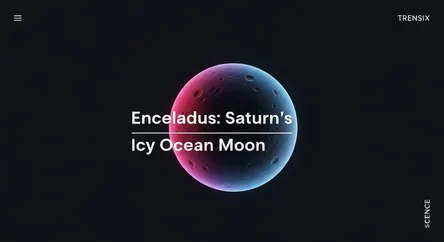Science
Enceladus: Saturn's Icy Ocean Moon

Discover Enceladus, Saturn's icy moon with a subsurface ocean and geysers that hint at the potential for extraterrestrial life.
What is it?
Enceladus is one of Saturn's most intriguing moons. A relatively small, icy body, it is famous for the massive water-rich plumes that erupt from its south polar region. Data from NASA's Cassini mission revealed that beneath its frozen crust lies a global liquid water ocean. These geysers, originating from the ocean below, spew ice grains, water vapor, and simple organic molecules into space, creating Saturn's E-ring. Its bright, reflective surface is one of the most pristine in the solar system, indicating active geological processes that constantly resurface the moon.
Why is it trending?
Enceladus is a hot topic because its subsurface ocean contains nearly all the key ingredients known to be necessary for life: liquid water, an energy source, and essential chemical elements, including carbon, hydrogen, nitrogen, oxygen, phosphorus, and sulfur. Recent analyses of Cassini data confirmed the presence of complex organic molecules and phosphates, critical building blocks for DNA and cell membranes. This makes Enceladus one of the most promising locations in our solar system to search for current extraterrestrial life, driving proposals for new missions like the Enceladus Orbilander.
How does it affect people?
The discovery of a potentially habitable environment on Enceladus profoundly impacts humanity's search for life beyond Earth. It expands our understanding of where life could exist, suggesting that 'habitable zones' aren't limited to rocky planets orbiting stars at just the right distance. This potential for a second genesis of life in our own solar system fuels scientific curiosity, drives the development of new space exploration technologies, and inspires fundamental questions about our place in the universe. The prospect of finding even microbial life on Enceladus would be a revolutionary scientific discovery.